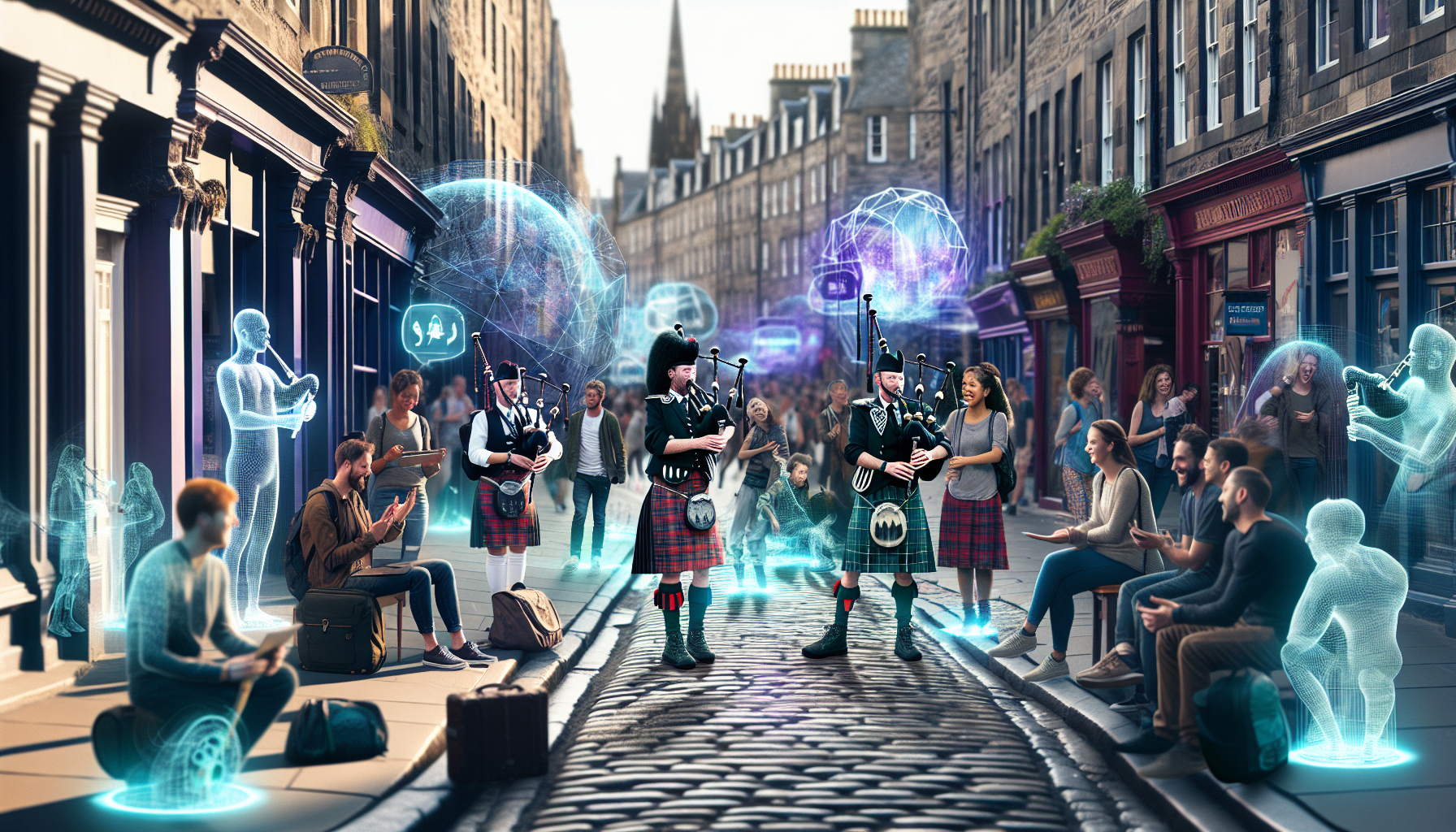
When Code Meets Creativity: Edinburgh’s Tech-Fueled Arts Revolution
Walk down the cobblestone streets of Edinburgh during the Fringe Festival, and you expect certain things: the distant skirl of bagpipes, the buzz of a thousand conversations, and performers vying for your attention on every corner. It’s a city steeped in history, where ancient castles watch over a modern metropolis. But this year, a new kind of artist has taken the stage. Its medium isn’t paint or clay, and its language isn’t Gaelic or Scots—it’s Python, C++, and the complex logic of machine learning algorithms.
The BBC’s recent “Tech Life” special pulled back the curtain on a fascinating convergence happening in the heart of Scotland, where art and technology are not just coexisting, but creating something entirely new. This isn’t about using a computer to design a poster; it’s about a fundamental shift in the creative process itself. For developers, entrepreneurs, and tech professionals, what’s happening in Edinburgh is more than just a spectacle—it’s a living R&D lab for the future of human-computer collaboration.
The AI as the Auteur: Beyond Automation
For years, the conversation around artificial intelligence has been dominated by efficiency and automation. We talk about AI optimizing supply chains, powering chatbots, and streamlining workflows. But in the pop-up galleries and darkened theaters of Edinburgh, AI is being asked a different question: Can you create something that moves us?
The answer is a resounding, and slightly unsettling, yes. We’re seeing performances where:
- An AI co-writes the script, trained on centuries of dramatic literature but capable of generating dialogue that is unpredictably modern and strangely poetic.
- Generative algorithms create ever-evolving visual backdrops for plays, responding in real-time to the actors’ emotions or the audience’s reactions.
- Machine learning models compose musical scores, blending genres in ways a human composer might never consider.
This isn’t just pressing a button and getting a finished product. The real innovation lies in the collaboration. A human director works with the AI’s script, shaping its raw output. A musician improvises alongside an AI-generated melody. It’s a partnership where the technology acts as a creative catalyst, a muse in the machine that pushes human artists beyond their conventional boundaries. This symbiotic relationship is powered by sophisticated software, often custom-built by small, agile teams who are part artist, part engineer.
The Code Behind the Curtain: A Developer’s Playground
So, how does this magic actually happen? For the tech professionals in our audience, this is where it gets really interesting. Behind every AI-powered art installation is a complex stack of technology, a testament to modern programming and infrastructure.
First, there’s the data. An AI that writes poetry needs to be fed a massive corpus of text. A visual generator needs to be trained on millions of images. This data is the lifeblood, and processing it requires immense computational power—far more than a single laptop can provide. This is where the cloud comes in. Startups and artists are leveraging cloud platforms like AWS, Google Cloud, and Azure to train their complex machine learning models without needing to invest in a server farm.
Then there’s the software itself. Developers are creating bespoke applications that act as the interface between the artist and the AI. These aren’t off-the-shelf solutions. They involve:
- Natural Language Processing (NLP): To interpret scripts or even audience sentiment.
- Computer Vision: To allow installations to “see” and react to people moving through a space.
- Real-time Data Processing: To ensure that the art can react instantaneously, creating a seamless and immersive experience.
Many of these pioneering tech-art collectives operate like lean startups. They might even be developing their core technology as a SaaS (Software as a Service) platform, envisioning a future where artists everywhere can license their AI tools to create their own unique works. The Edinburgh Festival becomes their proving ground—a high-profile place to beta test their product in front of a live, critical audience.
The Unseen Challenge: Cybersecurity in the Interactive Age
As art becomes more interactive and data-driven, it also inherits the challenges of the digital world. When an installation invites you to text a message that becomes part of a projected poem, or uses sensors


